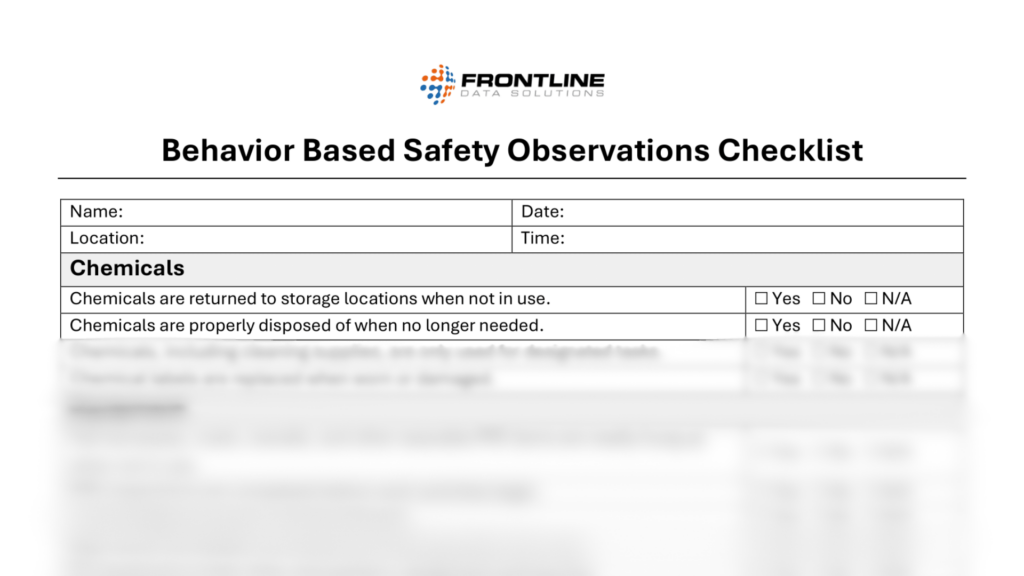Behavior Based Safety Observation Checklist
Resources >Template Library > Behavior Based Safety Observation Checklist
Download this free Behavior Based Safety Observation Checklist from Frontline Data Solutions to document some of the habits you notice during your next safety walk.

What Is a Behavior Based Safety Observation Checklist?
Behavior based safety (BBS) is a health and safety approach focused on observing and reinforcing safe workplace behaviors and habits. It involves coaching workers to make safe decisions and implementing control measures that reinforce the behaviors you want them to follow. Taking this approach is a form of proactive safety management.
A behavior based safety observation checklist is a document for recording worker behaviors during routine tasks. You can use it to track safe and unsafe actions, note conditions, and provide immediate feedback to employees.
It’s not about catching people doing something wrong. Instead, it’s about reinforcing positive habits and addressing risks before they lead to incidents.
Why Use a BBS Observation Checklist?
There are several reasons to use a behavior based safety checklist. First, it provides consistency. If everyone on your team uses the same document format, you’ll have better data to compare. Second, it gets your team in the habit of documenting their findings and tracking action items to completion.
Another reasons to use a checklist is that it can help managers and safety specialists become better coaches. The checklist as a guideline that your team can use to find and correct behaviors in real time.
Your checklist should reflect the specific tasks, risks, and behaviors relevant to your operation. But most checklists include the following sections:
- Observation date, time, and location
- Name of the task and person observing it
- Areas of interest (chemical handling, PPE, ergonomics, 5S, etc.)
- Space for adding notes or corrective action ideas
The more specific your checklist is to your processes, the better results you’ll get. Make sure you have action tracking software or some sort of system in place to follow up on any issues you see.
Tips for Conducting Effective Safety Observations
When doing a behavior assessment, try to be as objective as possible. Workers have all sorts of reasons for doing things a certain way. You’ll get better insights if you focus on improving, not punishing. You also want to make sure to observe both workers and teams. People act differently when they’re alone, so you can almost always find new improvements when you take the time to audit both.
If you’re trying to decide where to start, always look at high-risk activities first. This would be anything involving heavy machinery or complex procedures. Review your incident logs to find the processes with the highest incident rates.
Lastly, you want to make sure you’re providing feedback in the moment. If you see unsafe behaviors, coaching in real time is the best way to fix them. The last thing you want to do is bring it up when the employee is not currently performing that task. When safety becomes a habit, everyone wins. Download our behavior based safety observation checklist to spot risks early, build accountability, and create a culture where safety is everyone’s job.
More Templates to Discover
Found this template helpful? You might like some of these, too:
